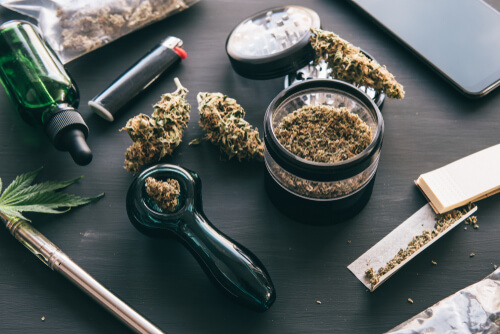
People who are fond of raw forms of CBD choose CBD flower while others go for cannabidiol products obtained from CBD extract. CBD flower obtained from the female cannabis plant is rich in cannabinoids, terpenes, and flavonoids. The cannabinoid percentages vary according to the type of cannabis plant.
Compounds CBD and THC do not occur naturally in cannabis plants. They are present as CBDA and THCA and converts to CBD and THC respectively on decarboxylation of CBD flower.
The hemp plant is known for its high CBD percentages, while its THC percentages are well below the maximum limit set by the US government. In this session, we use the terms CBD flower and hemp flower interchangeably to refer to the flowers of female hemp plants.
What Is The Importance Of Decarboxylation?
The decarboxylation process is carried out to convert the inactive compounds of hemp flower to active compounds. The acidic precursor of CBD is CBDA (cannabidiolic acid), which does not have the therapeutic properties equal to that of CBD.
Decarboxylation requires heat and time for its successful completion. You need to be worried about decarbing only if you are using raw forms of CBD like hemp flower. If you are using processed CBD products like CBD oils, tinctures, etc, know that they will have already undergone decarboxylation.
As you smoke or vape hemp flower, decarbing takes place because both methods require heat. However, when it comes to CBD edibles, make sure that the hemp flower undergoes decarboxylation prior to its addition to edibles. To decarb hemp flower at home, you may heat the milled flowers to the appropriate temperature in an oven by keeping a close watch on the heating time so that overheating does not occur. Excess temperature can degrade cannabidiol and reduce its potency.
How Is CBDA Related To CBD?
As mentioned in the previous session, CBDA is the acidic form of CBD. Due to its peculiar structure, CBDA is not absorbed easily into the bloodstream, unlike CBD. This reason is enough for decarbing CBD hemp. CBD is far more accessible than CBDA, and it is easier for the endocannabinoid system to assist the process of CBD taking effect in the body.
How Do I Know If My CBD Product Is Decarboxylated?
Almost every CBD product that is put to sale will already be decarboxylated. The case of products identified as raw is exceptional.
The simplest of methods to identify if your CBD product has undergone decarboxylation is to check the product label for the percentages of CBDA and CBD. If the label shows high amounts of CBDA, it means that the product hasn’t undergone decarboxylation.
To get the best benefits out of using hemp flower, carry out the decarboxylation process by following strict operational guidelines.

